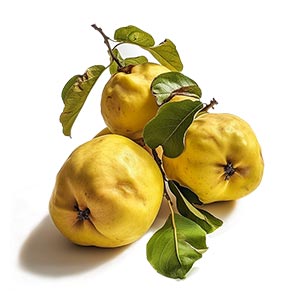Quince in fragrances offers a unique combination of tartness and sweetness, contributing a subtle yet distinctly fruity note. This lesser-known fruit imparts a fresh, slightly green aroma that can be likened to a mix of apple and pear, but with its own unique twist. The use of quince in perfumery is not as common as other fruits, giving it a niche appeal. Its inclusion in fragrance compositions is often to introduce a novel, subtly sweet, and tart aspect, especially in top and middle notes. Quince pairs well with floral and woody notes, adding a refreshing and mildly tangy dimension to fragrances. Its scent is particularly effective in creating a crisp, clean, and slightly exotic aura, making it a valuable ingredient for innovative and modern fragrances.
Natural or Synthetic?
Natural extraction of quince scent, though feasible, is not commonly practiced in perfumery. This is mainly due to the subtlety of the fruit's aroma and the inefficiency of extraction methods. When used naturally, the extraction would likely be through methods like solvent extraction or enfleurage, which are more suitable for delicate scents. Synthetically, quince fragrance is often recreated using a combination of chemical compounds that mimic its sweet, slightly tart, and floral notes. This approach allows for a more consistent and pronounced quince scent in perfumes. The specific chemicals used in these synthetic versions vary but aim to closely emulate the natural fragrance of quince.
Fragrance Families Quince Most Commonly Found In
Show fragrances that contain Quince as a note



